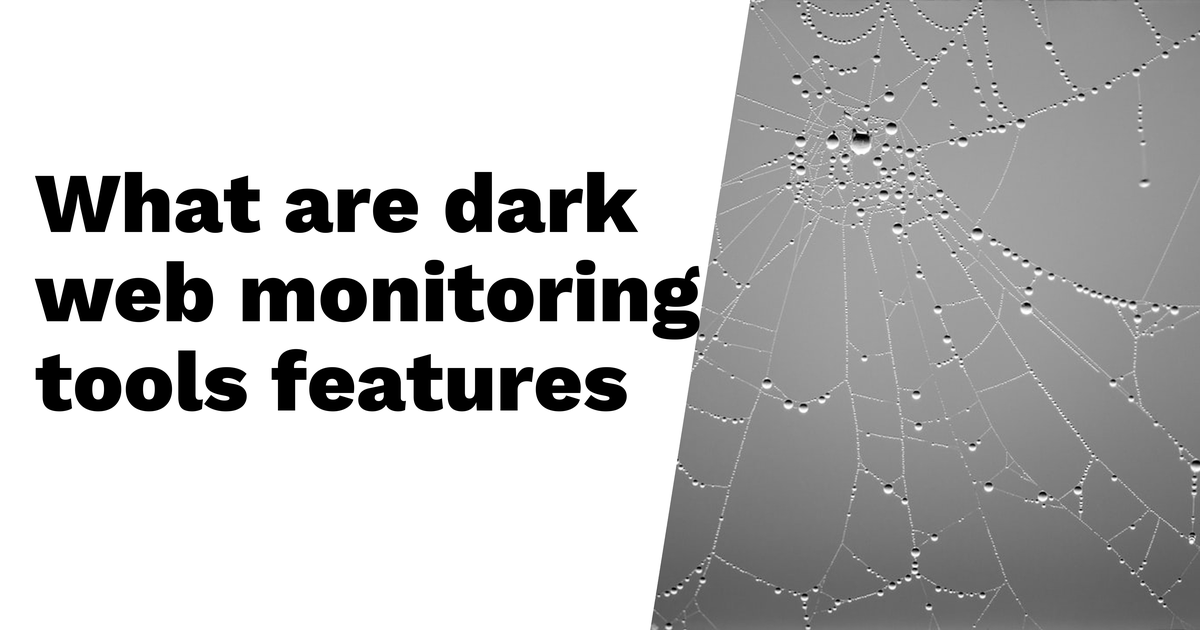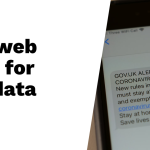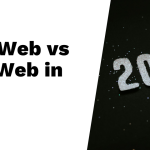Dark web monitoring tools are essential for organizations seeking to protect their sensitive information from cyber threats. These tools help track and analyze data on the dark web to identify if any of an organization’s specific information, like passwords or credentials, has been compromised. They play a crucial role in enhancing cybersecurity by providing threat intelligence and real-time monitoring. Features such as incident response support and integration with existing security platforms allow organizations to act quickly when threats are identified. With 24/7 surveillance, these solutions proactively prevent potential data breaches while safeguarding stakeholder information from exploitation in a complex digital landscape.
Table of Contents
- Definition of Dark Web Monitoring
- Purpose and Importance of Monitoring Tools
- Key Features of Dark Web Monitoring Tools
- Types of Information Monitored
- Business Benefits of Dark Web Monitoring
- Challenges in Dark Web Monitoring
- Who Needs Dark Web Monitoring?
- The Future of Dark Web Monitoring Tools
- Frequently Asked Questions
1. Definition of Dark Web Monitoring
dark web monitoring is the practice of searching through the hidden parts of the internet to find unauthorized exposure of sensitive information. This means looking for data that has been compromised or is being sold illegally. Organizations employ automated tools that continuously scan various dark web marketplaces to identify any of their data that might be at risk. The process allows companies to gain insight into the landscape of stolen data and understand potential threats to their operations. Monitoring efforts often extend to tracking discussions surrounding specific organizations or industries on dark web forums, enabling a more comprehensive understanding of the risks they face. The types of data monitored can include personal information, financial records, and intellectual property. Ultimately, the goal of dark web monitoring is to proactively identify risks before they can be exploited by cybercriminals, making it a vital part of a broader cybersecurity strategy. This monitoring relies on a combination of advanced technology and human expertise to analyze the findings, ensuring that organizations stay ahead of emerging threats. Regular monitoring is crucial, as the dark web is constantly evolving.
2. Purpose and Importance of Monitoring Tools
Dark web monitoring tools serve a critical role in cybersecurity by providing early warnings of potential data breaches. These tools enable organizations to detect threats against their data before cybercriminals can exploit them, fostering a proactive approach to security. Swift response to identified threats minimizes potential damage, helping to protect sensitive information.
Additionally, monitoring tools assist in identifying vulnerabilities within an organization’s security posture, allowing for timely adjustments. By understanding what is being discussed or sold on the dark web, companies can refine their security measures accordingly. This awareness not only aids in bolstering defenses but also supports compliance with legal and regulatory standards regarding data protection.
Furthermore, the use of monitoring tools enhances customer trust. When organizations demonstrate that they are taking proactive steps to safeguard data, it reassures clients and partners. This trust is invaluable in maintaining long-term relationships and sustaining business operations.
Moreover, dark web monitoring tools can help organizations prioritize their cybersecurity investments based on actual threats they face. By providing valuable data for risk assessments and management, these tools ensure that resources are allocated effectively. Insights gained from monitoring can also be used to educate employees about potential threats, creating a more informed workforce that is better prepared to recognize and respond to risks.
3. Key Features of Dark Web Monitoring Tools

Dark web monitoring tools offer a variety of features that are crucial for organizations looking to safeguard their sensitive information. One of the primary features is threat intelligence, which helps in understanding and analyzing trends in cyber threats. By aggregating data from various dark web sources, these tools provide insights that can inform security strategies and actions.
Real-time monitoring is another essential feature. Continuous scanning of the dark web allows organizations to receive immediate alerts when their data is compromised. This prompt notification is vital as it enables swift action to mitigate potential damage.
Incident response support is also built into many tools, helping streamline communication among teams during a security breach. This feature ensures that IT and legal departments can coordinate effectively to manage the situation.
Integration with existing security platforms enhances the overall security ecosystem. By linking dark web monitoring data to broader security systems, organizations can improve their threat detection and response capabilities.
Darknet search engines are often included, allowing users to navigate the dark web efficiently. These specialized search capabilities enable the discovery of relevant information that may otherwise go unnoticed.
OSINT monitoring further enriches the data collected, providing context about ongoing threats. By gathering publicly available information, organizations can better understand the landscape of cyber risks they face.
Digital risk analysis tools assess risk levels associated with dark web data, helping prioritize security efforts based on severity. Custom alerts allow organizations to tailor notifications according to specific types of data they wish to monitor, ensuring they remain focused on the most critical threats.
User-friendly interfaces are common, enabling easy navigation and interpretation of complex data. This accessibility is crucial for teams that may not have specialized training in cybersecurity. Lastly, comprehensive reporting features help organizations track their monitoring results over time, making it easier to assess the effectiveness of their dark web monitoring efforts.
| Feature | Description |
|---|---|
| Threat Intelligence | Tools aggregate and analyze data from various dark web sources, providing insights that help mitigate hacking threats. |
| Real-Time Monitoring | Continuous scanning of the dark web for mentions of specific sensitive information, alerting organizations promptly when threats arise. |
| Incident Response Support | Enables faster incident response by notifying relevant teams (e.g., IT, legal) when sensitive information is compromised. |
| Integration with Security Platforms | Collected data can be integrated into broader security systems to enhance threat detection and response strategies. |
| Darknet Search Engines | These tools may include built-in search engines specifically designed to navigate the dark web, allowing users to locate relevant information efficiently. |
| OSINT Monitoring | Gathering data from dark web discussions and forums to provide context about current cybersecurity threats and vulnerabilities. |
| Digital Risk Analysis | Tools help assess digital risk scores based on dark web intelligence, crucial for regulatory compliance and risk management. |
| Custom Alerts | Organizations can set parameters for alerts based on specific types of data. |
| User-Friendly Interfaces | Many tools provide dashboards that are easy to navigate, making data interpretation simpler. |
| Reporting Features | Tools often include comprehensive reporting options to track monitoring results over time. |
4. Types of Information Monitored
Dark web monitoring tools keep an eye on various types of sensitive information that could pose risks to organizations. One critical area is exposed credentials, which includes user accounts and passwords that may have been compromised. If your login details are found on the dark web, it’s a signal that your accounts could be at risk of unauthorized access.
Data leaks are another significant concern. These tools can identify if sensitive information, such as Social Security numbers or personal identification details, has been posted online. This is crucial for individuals and organizations alike, as such leaks can lead to identity theft and fraud.
Moreover, monitoring for threat actor tools is essential. This entails keeping track of discussions surrounding hacking tools and techniques used by cybercriminals. Understanding these methods can help organizations strengthen their defenses against potential attacks.
Financial information is also on the radar, as these tools look for stolen banking details or credit card information. Finding such data on the dark web can alert organizations to possible financial fraud that could impact both the company and its customers.
Corporate data, including proprietary information, client lists, and trade secrets, is another area of focus. If this type of data is compromised, it can lead to severe competitive disadvantages and financial losses.
Social media mentions are monitored to alert organizations about discussions involving their brand or representatives in potentially harmful contexts. This is particularly important as social media can amplify reputational damage.
Phishing campaigns targeting organizations or their employees are tracked as well. Awareness of these threats allows for proactive measures to prevent successful attacks.
Additionally, malware discussions are monitored to identify any conversations that might indicate emerging threats. Knowing what malware is being discussed can aid in preparing defenses against infections.
Scams and fraud schemes that could directly affect the organization or its clients are also on the watchlist. By tracking these activities, organizations can take preemptive action to protect their stakeholders.
Lastly, reputation monitoring assesses whether the organization’s reputation is being tarnished on dark web platforms. Maintaining a positive reputation is crucial for business success, and awareness of any negative discussions can lead to timely action.
5. Business Benefits of Dark Web Monitoring
Dark web monitoring tools offer significant advantages for businesses, enhancing their overall security posture. By identifying threats before they escalate, organizations can stay ahead of cybercriminals. This proactive approach not only protects sensitive data but also safeguards the interests of clients and employees, reducing the risk of exploitation. Continuous surveillance is another key benefit, as these tools provide round-the-clock monitoring to quickly detect any unauthorized use of data. This constant vigilance helps in preventing potential data breaches, allowing companies to address issues before they cause substantial harm.
Moreover, early detection leads to cost savings by minimizing the financial impact associated with data breaches and the necessary remediation efforts. Organizations benefit from improved incident response capabilities due to timely alerts that enable relevant teams to act swiftly. The data collected through monitoring aids in informed decision-making regarding cybersecurity investments, ensuring that resources are allocated effectively. Additionally, insights gained from monitoring can enhance employee awareness around security best practices, fostering a culture of vigilance within the organization.
Compliance with regulatory obligations related to data protection is another crucial aspect, as dark web monitoring tools help businesses meet their legal responsibilities. Companies that utilize these tools also gain a competitive advantage, as they can better protect their assets and reputation in an increasingly digital landscape.
6. Challenges in Dark Web Monitoring
Monitoring the dark web presents various challenges that organizations must navigate. One significant issue is the dark web’s decentralized nature, which makes it hard to obtain comprehensive intelligence. New sites and forums continuously emerge, adding complexity to the monitoring process. Anonymity is crucial in this environment; if monitoring efforts are exposed, it could alert cybercriminals and hinder data collection. Moreover, the sheer volume of data available can overwhelm organizations lacking effective filtering tools.
Accurate interpretation of the gathered data requires skilled analysts who understand the dark web’s complexities. Legal and ethical considerations also come into play, especially when monitoring discussions or activities that may infringe on privacy rights. Additionally, dark web monitoring tools need regular updates to remain effective against evolving threats, which can be resource-intensive. Organizations often struggle to integrate dark web data into their existing security frameworks, leading to potential gaps in their defenses. Finally, the effectiveness of monitoring tools can vary, necessitating careful selection and evaluation, which can be particularly challenging for smaller organizations with limited resources.
- The dark web’s decentralized nature makes it difficult to monitor comprehensively.
- There is a constant influx of new sites and forums, complicating the monitoring process.
- Maintaining anonymity is crucial, as exposure may alert criminals to monitoring efforts.
- The sheer volume of data can overwhelm organizations without effective filtering mechanisms.
- Interpreting the data accurately requires skilled analysts who understand the dark web’s nuances.
- Legal and ethical issues may arise when monitoring discussions or activities.
- Tools may require ongoing updates to stay effective against evolving threats.
- Organizations face challenges in integrating dark web data with existing security frameworks.
- The effectiveness of monitoring tools can vary, necessitating careful selection and evaluation.
- Resource allocation for monitoring can be a challenge, especially for smaller organizations.
7. Who Needs Dark Web Monitoring?
Organizations that handle sensitive customer data, like financial institutions, healthcare providers, and retail companies, are prime candidates for dark web monitoring. These businesses often possess information that, if compromised, could lead to severe reputational damage and financial loss. Additionally, companies holding intellectual property or proprietary information face higher risks of being targeted by cybercriminals.
Firms that have previously experienced data breaches should definitely invest in monitoring tools to safeguard against future incidents. Non-profits and educational institutions also need to protect their data and reputations, as they can be equally vulnerable to data theft. Consulting firms that manage client data should consider these tools to ensure client confidentiality and trust.
E-commerce platforms are another critical sector that must monitor the dark web for stolen payment information and customer data, as breaches can lead to significant financial ramifications. Government agencies tasked with protecting national security must also implement monitoring measures to safeguard sensitive information.
Moreover, companies undergoing mergers or acquisitions should be vigilant about potential data exposure during these transitions. Organizations in heavily regulated industries may require monitoring to ensure compliance with legal standards. Lastly, startups that collect user data should implement monitoring from the outset to mitigate future risks, establishing a robust security posture early on.
8. The Future of Dark Web Monitoring Tools
The future of dark web monitoring tools is poised for significant advancements. As artificial intelligence continues to evolve, we can expect these tools to enhance their capabilities in detecting threats. Machine learning algorithms will likely lead to improvements in threat detection accuracy, reducing the number of false positives that organizations currently face. As cyber threats become more sophisticated, monitoring tools will need to adapt to new methods of data compromise, ensuring they remain effective in safeguarding sensitive information.
Integration with other security technologies will play a crucial role in creating a comprehensive defense strategy. This holistic approach will allow organizations to better respond to threats as they emerge. Additionally, user privacy concerns will drive the development of more ethical monitoring practices, ensuring that while organizations protect their data, they also respect individual privacy rights.
Real-time data analytics will enable faster responses to emerging threats, allowing companies to act swiftly when potential breaches are detected. As the Internet of Things continues to expand, the need for monitoring new types of data exposure will be paramount. Collaboration among organizations may lead to shared intelligence, enhancing overall security by pooling knowledge and resources.
Moreover, greater emphasis on user education will complement monitoring efforts. Empowering employees to recognize potential threats will serve as an additional layer of defense. Lastly, as regulatory frameworks evolve, they will shape the features and capabilities of monitoring tools, ensuring compliance while enhancing security measures.
Frequently Asked Questions
1. What is the dark web and why do people monitor it?
The dark web is a part of the internet that isn’t indexed by normal search engines. It can be a hub for illegal activity, so monitoring it helps protect against data breaches, identity theft, and other online threats.
2. How do dark web monitoring tools work?
These tools scan various dark web forums and websites for stolen information like emails, passwords, or personal details. They alert users if their information is found, allowing them to take action.
3. What key features should I look for in a dark web monitoring tool?
Look for features like real-time alerts, comprehensive scanning, an easy-to-use interface, and customer support. These make it easier to detect breaches and respond quickly.
4. Who can benefit from using dark web monitoring tools?
Individuals, businesses, and organizations can all benefit. For individuals, it helps protect personal data, while for businesses, it safeguards customer information and maintains trust.
5. Is dark web monitoring only for tech-savvy people?
Not at all. Most dark web monitoring tools are designed to be user-friendly, making them accessible to anyone regardless of their technical skills. They often provide simple dashboards and clear alerts.
TL;DR Dark web monitoring tools detect and track exposed or compromised information on the dark web, playing a crucial role in enhancing cybersecurity. They offer features like real-time monitoring, threat intelligence, and incident response support, addressing the growing need for organizations to protect sensitive data. By identifying potential threats before they escalate, businesses can safeguard their assets and uphold compliance, although challenges such as complexity and anonymity in monitoring persist. Essentially, any organization dealing with sensitive information should consider utilizing these tools for improved security.





